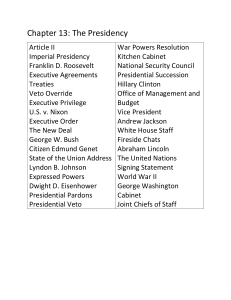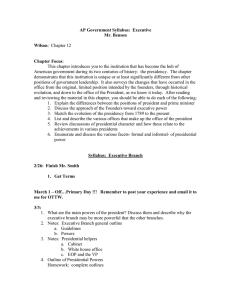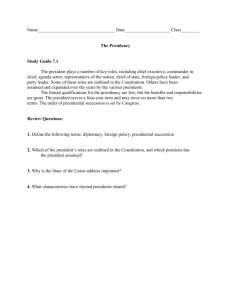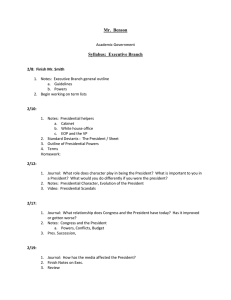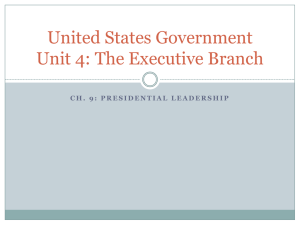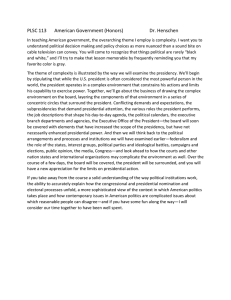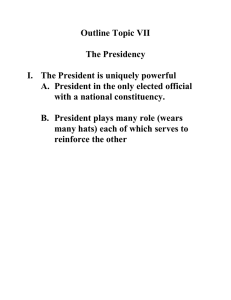US Presidency: Chapter Assignment & Study Guide
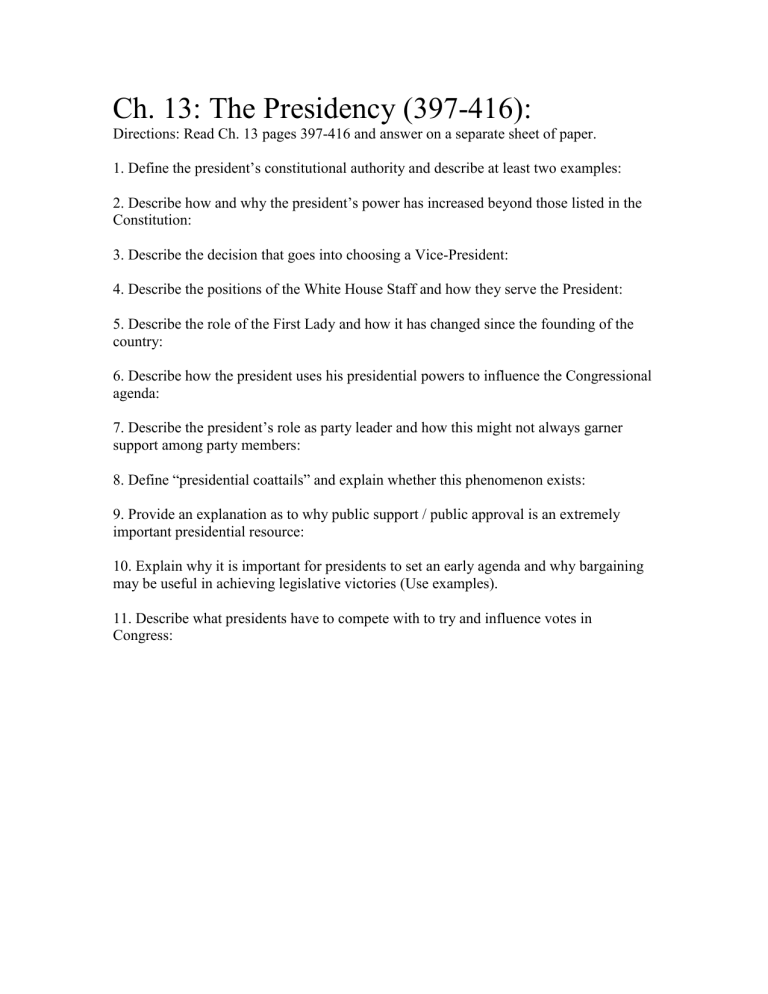
Ch. 13: The Presidency (397-416):
Directions: Read Ch. 13 pages 397-416 and answer on a separate sheet of paper.
1. Define the president’s constitutional authority and describe at least two examples:
2. Describe how and why the president’s power has increased beyond those listed in the
Constitution:
3. Describe the decision that goes into choosing a Vice-President:
4. Describe the positions of the White House Staff and how they serve the President:
5. Describe the role of the First Lady and how it has changed since the founding of the country:
6. Describe how the president uses his presidential powers to influence the Congressional agenda:
7. Describe the president’s role as party leader and how this might not always garner support among party members:
8. Define “presidential coattails” and explain whether this phenomenon exists:
9. Provide an explanation as to why public support / public approval is an extremely important presidential resource:
10. Explain why it is important for presidents to set an early agenda and why bargaining may be useful in achieving legislative victories (Use examples).
11. Describe what presidents have to compete with to try and influence votes in
Congress:
Ch. 13: The Presidency (416-432):
Directions: Read Ch. 13 pages 416-432 and answer on a separate sheet of paper.
12. Describe the provisions of the War Powers Act of 1973, and explain why President’s largely ignore the law.
13. Explain why the president is better equipped at handling international crises than
Congress.
14. Explain what president’s hope to accomplish by “going public.” (using the bully pulpit) Describe the response of the public following Reagan’s plea to the public in 1981 on his tax cut proposal.
15. Explain the following quote: Do you agree with this assessment?
“It is often said that the American public is ideologically conservative and operationally liberal.”

